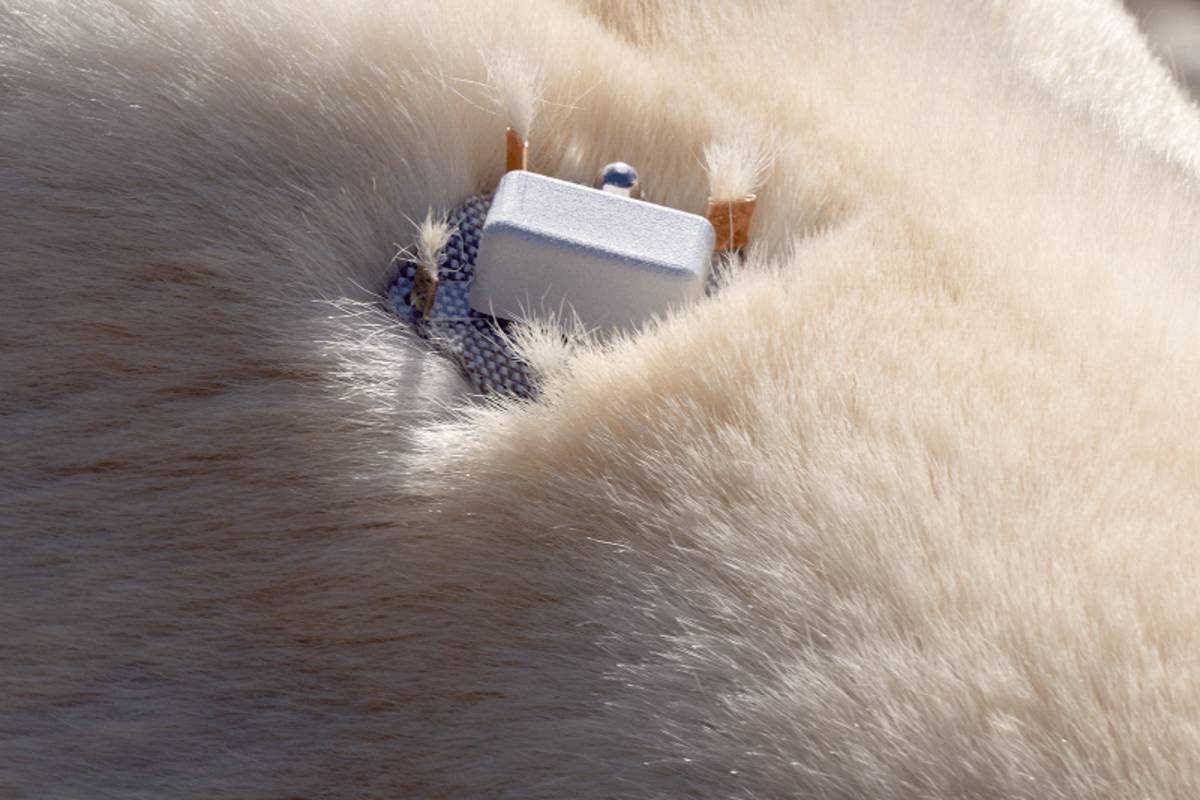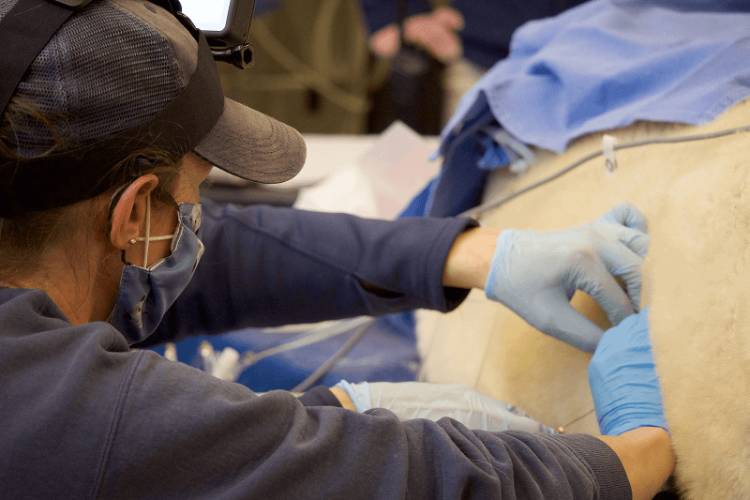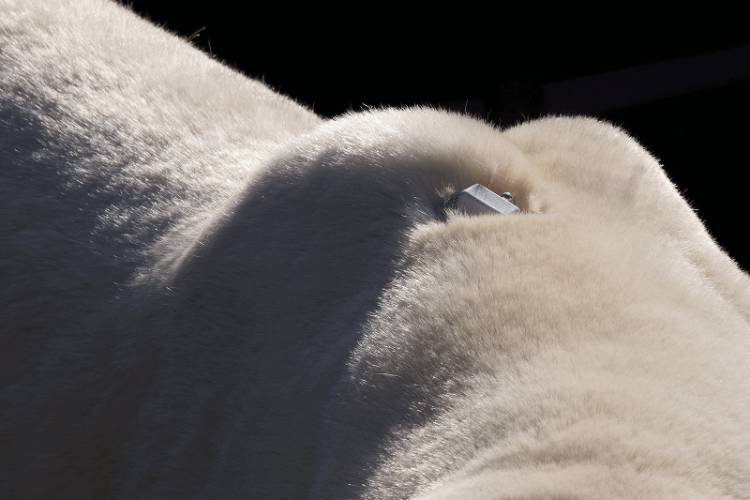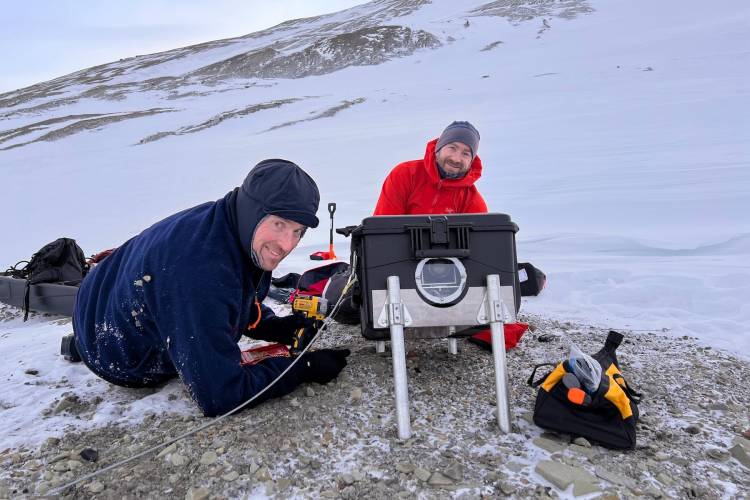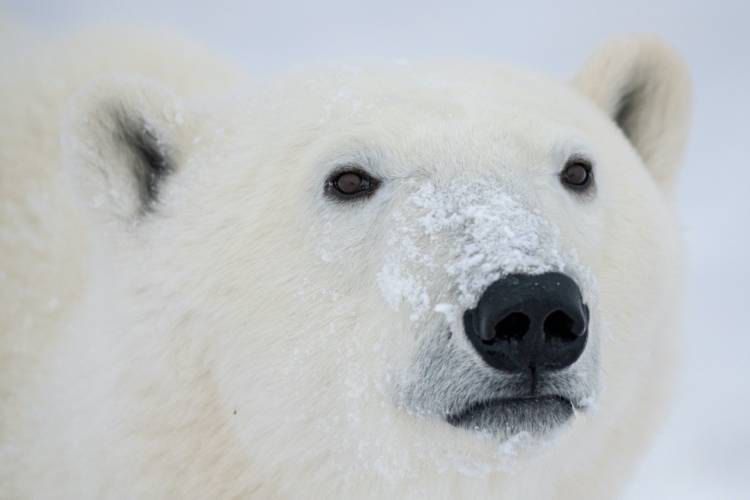Last week, a tech challenge to invent a better way to track polar bears moved out of the lab and onto the fur of a polar bear at the Point Defiance Zoo & Aquarium, one of seven North American zoos participating in the project. Blizzard, a 25-year-old male bear, tested out a new prototype tag created by 3M scientists through a voluntary Polar Bears International challenge. The pilot tags are non-permanent and combine currently available satellite transmitters with innovative ways to attach them.
During Blizzard’s annual vet exam, his dedicated keepers carefully secured the tag to the fur between his shoulder blades. Using a go-pro and photographs, they extensively documented the process to share with polar bear scientists and engineers. When they stepped away, the tag, roughly the size of a mandarin orange, looked minuscule against the backdrop of such a grand animal.
